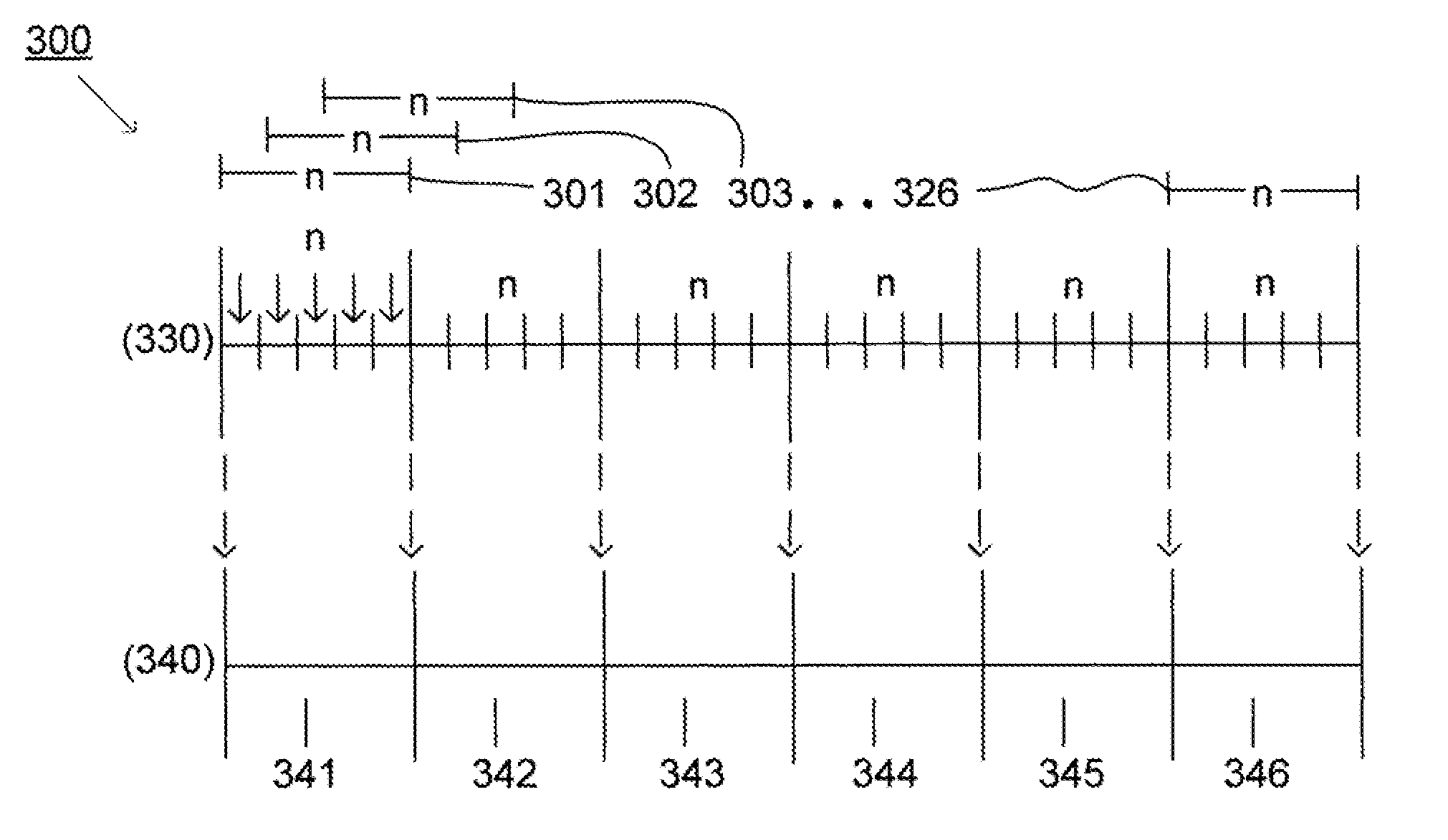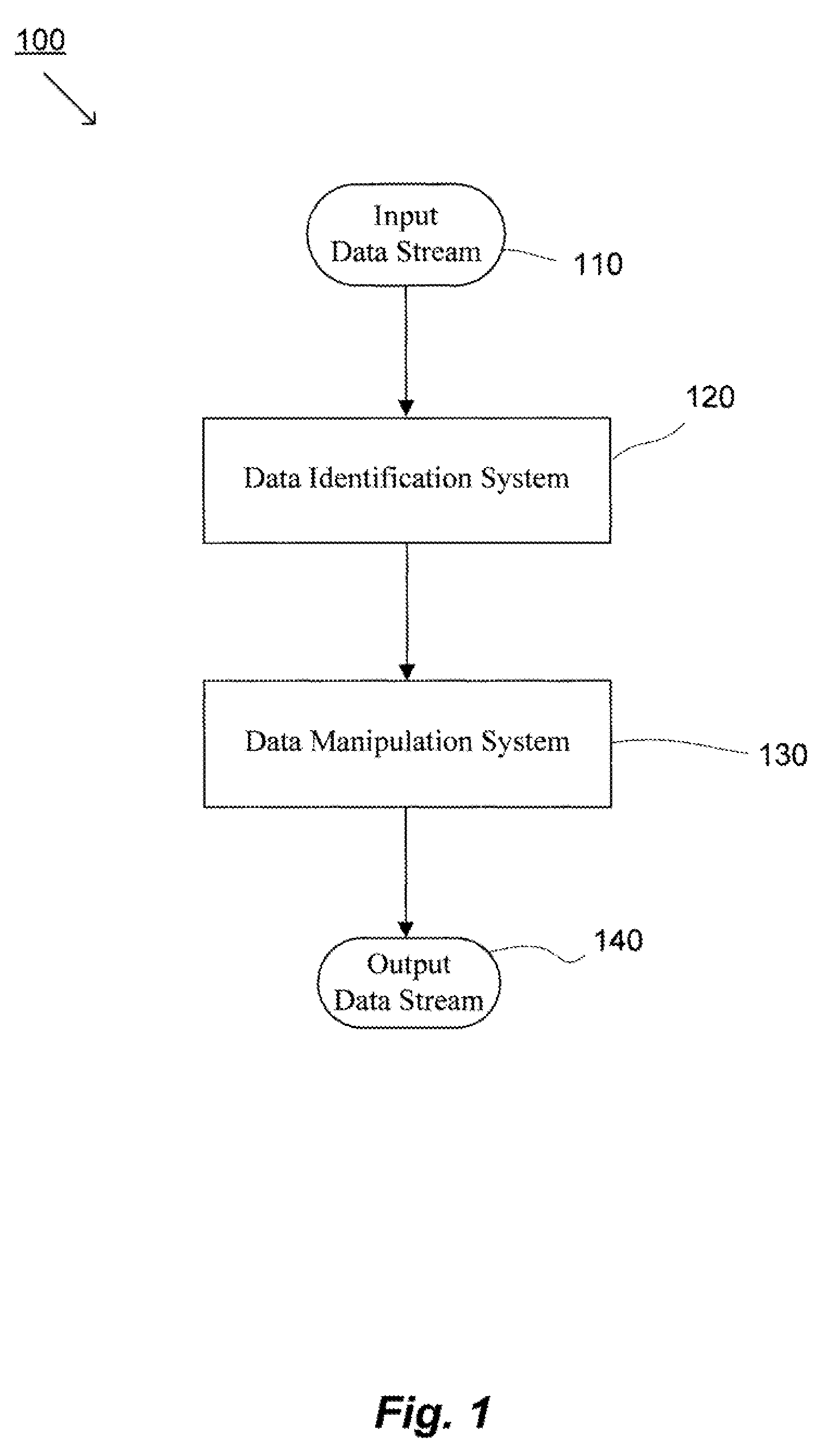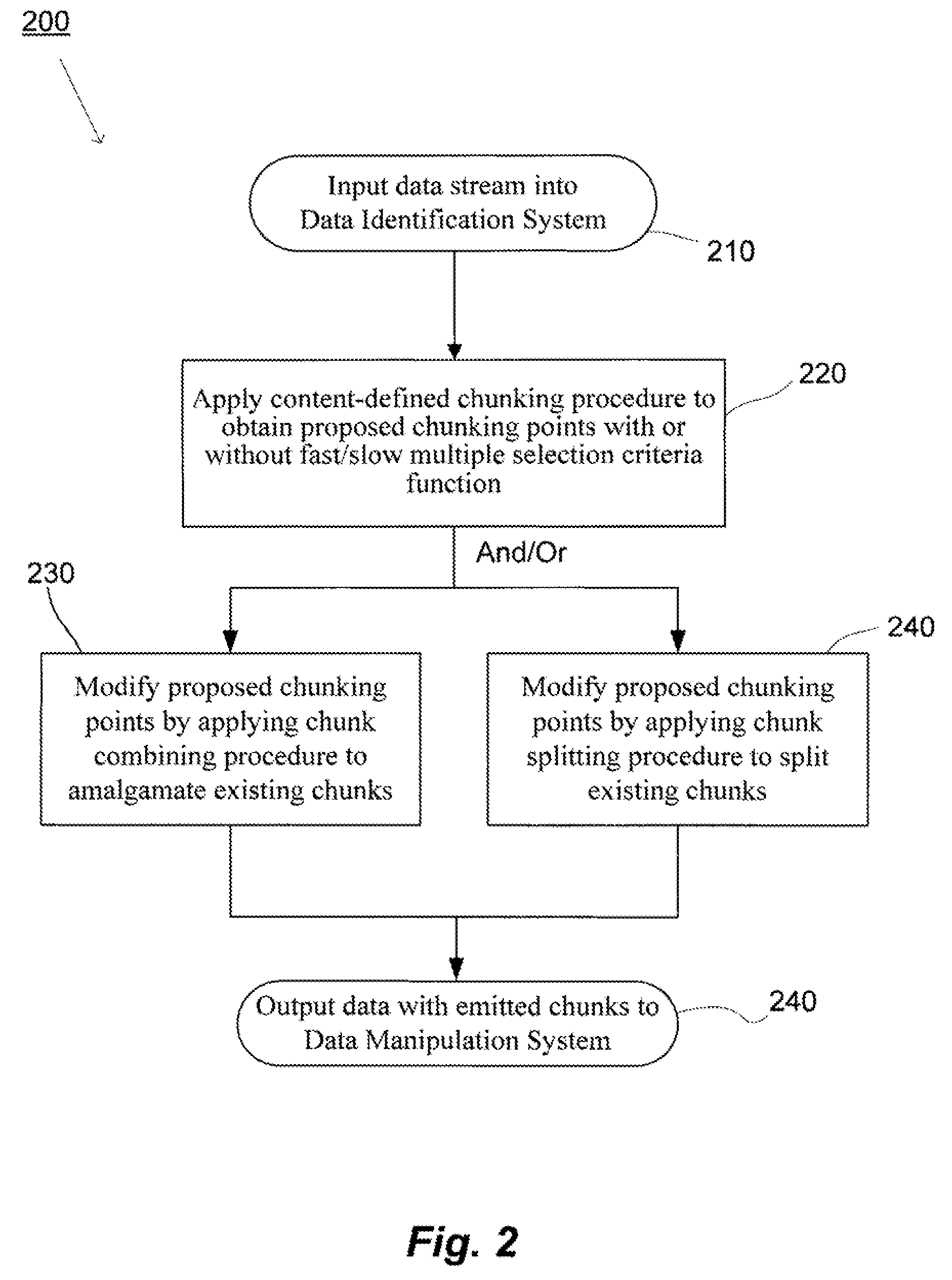Methods and systems for quick and efficient data management and/or processing
a data management and data technology, applied in the field of data processing and data management, can solve the problems of reducing the efficiency of data processing, raising serious concerns about data processing and management, and the magnitude of trying to manage all this data and related data streams and storage, so as to reduce the quality of data processing results, improve data processing efficiency, and eliminate data redundancy.
- Summary
- Abstract
- Description
- Claims
- Application Information
AI Technical Summary
Benefits of technology
Problems solved by technology
Method used
Image
Examples
Embodiment Construction
[0034]System(s) and method(s) for improved data management and data processing are provided herein. For example, various embodiments of the present invention may include systems and methods relating to relatively larger groups of data being selected with acceptable, comparable and / or better performing selection and / or redundancy elimination results (e.g., high data redundancy elimination). In various embodiments, the system(s) and method(s) may include, for example a data group, block, or chunk combining technique or / and a data group, block, or chunk splitting technique. The invention may be applicable for various types of data processing, data transmission, and / or data storage, and may be particularly useful applications of the invention may included, for example, network file systems of several types, space-optimized archival of collections of reference files, as well as file synchronization, backup data storage, etc. Various embodiments below will provide examples for using the i...
PUM
 Login to View More
Login to View More Abstract
Description
Claims
Application Information
 Login to View More
Login to View More - R&D
- Intellectual Property
- Life Sciences
- Materials
- Tech Scout
- Unparalleled Data Quality
- Higher Quality Content
- 60% Fewer Hallucinations
Browse by: Latest US Patents, China's latest patents, Technical Efficacy Thesaurus, Application Domain, Technology Topic, Popular Technical Reports.
© 2025 PatSnap. All rights reserved.Legal|Privacy policy|Modern Slavery Act Transparency Statement|Sitemap|About US| Contact US: help@patsnap.com



